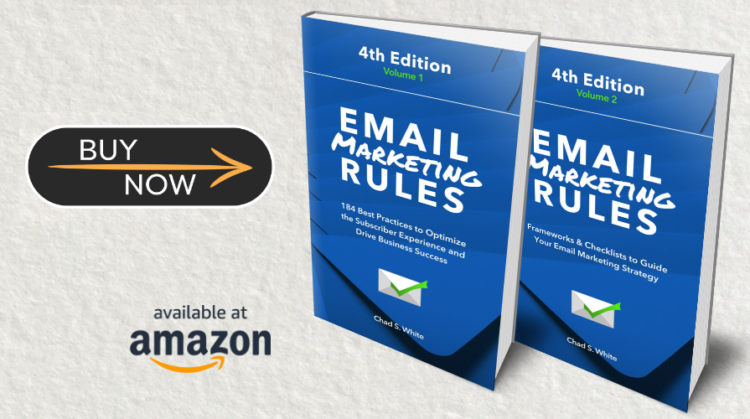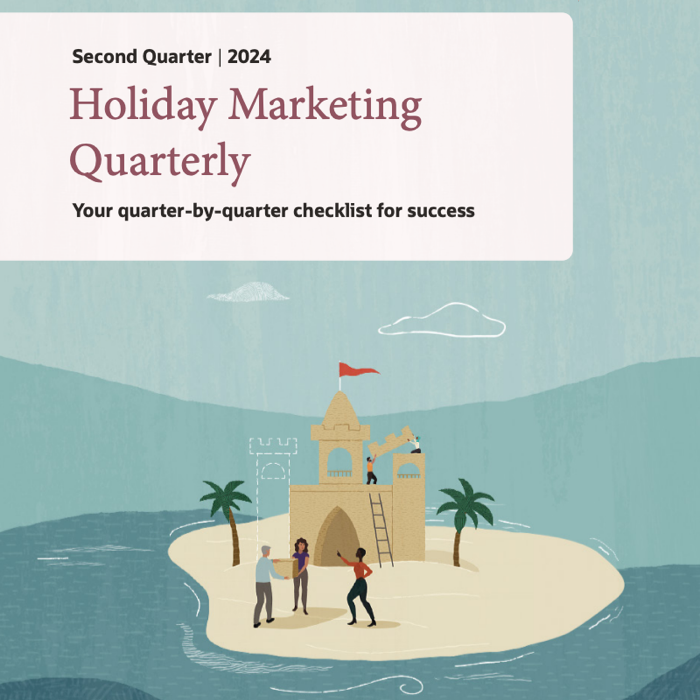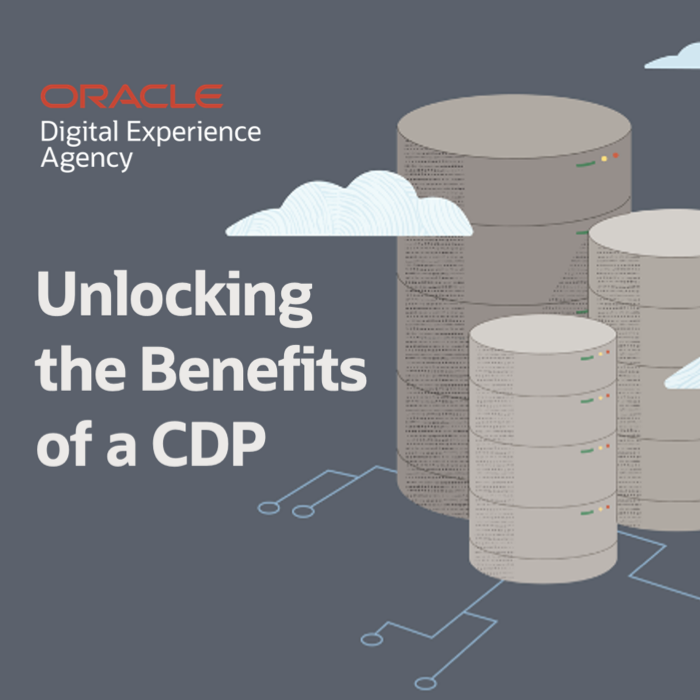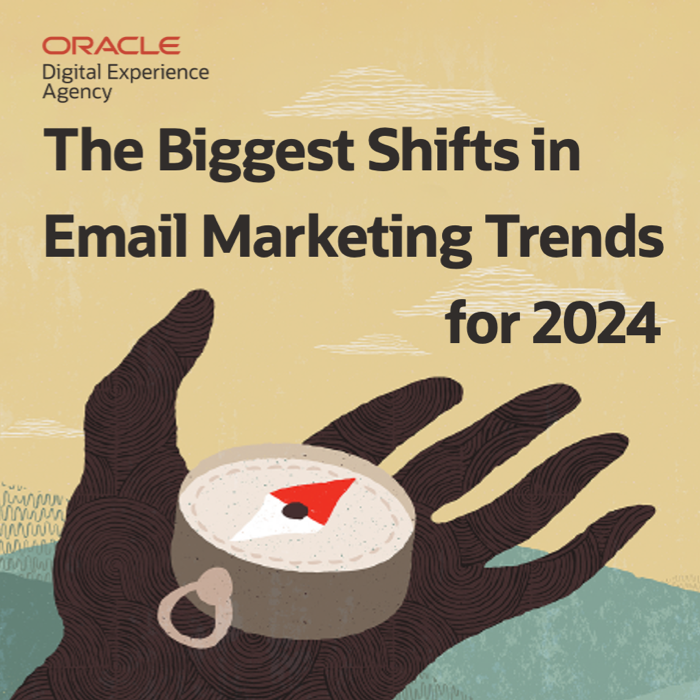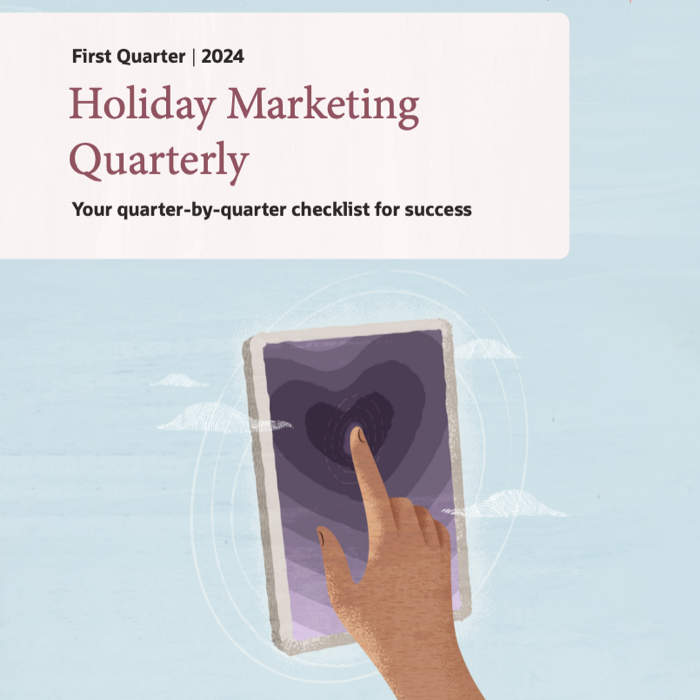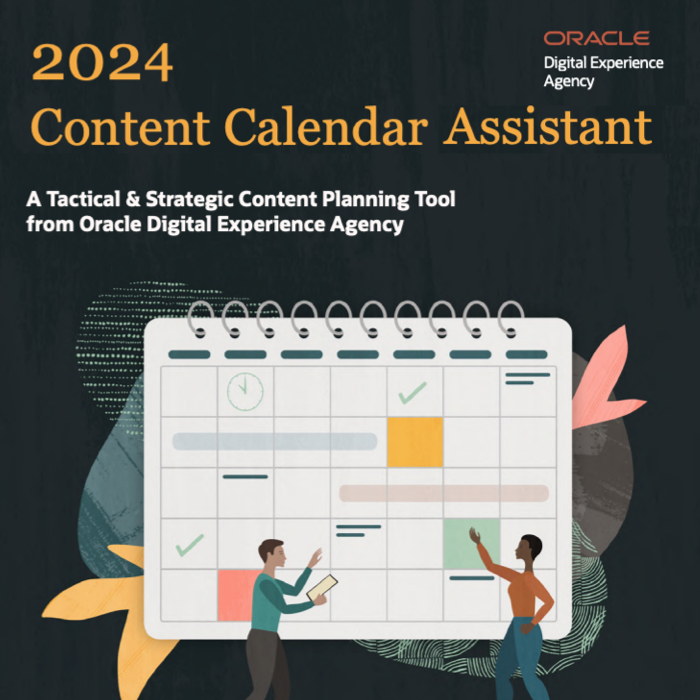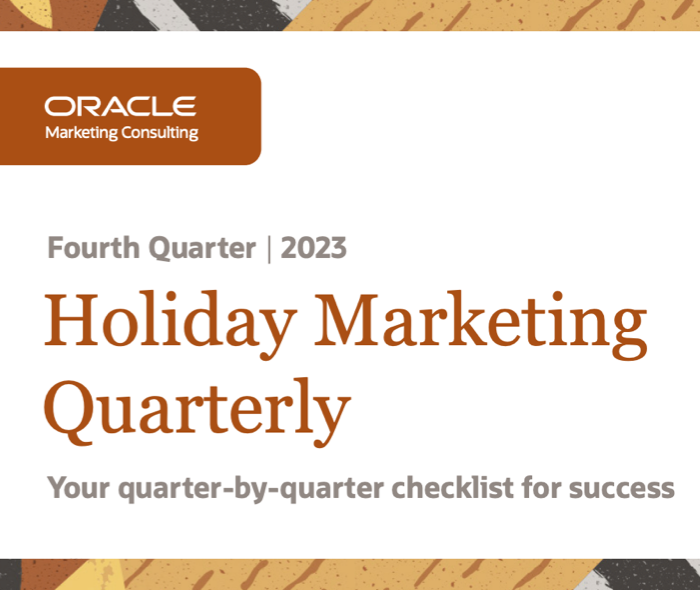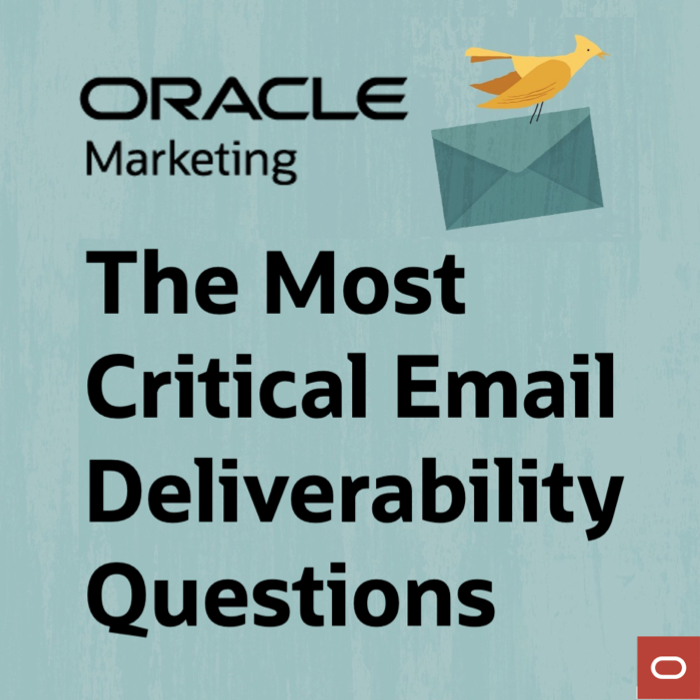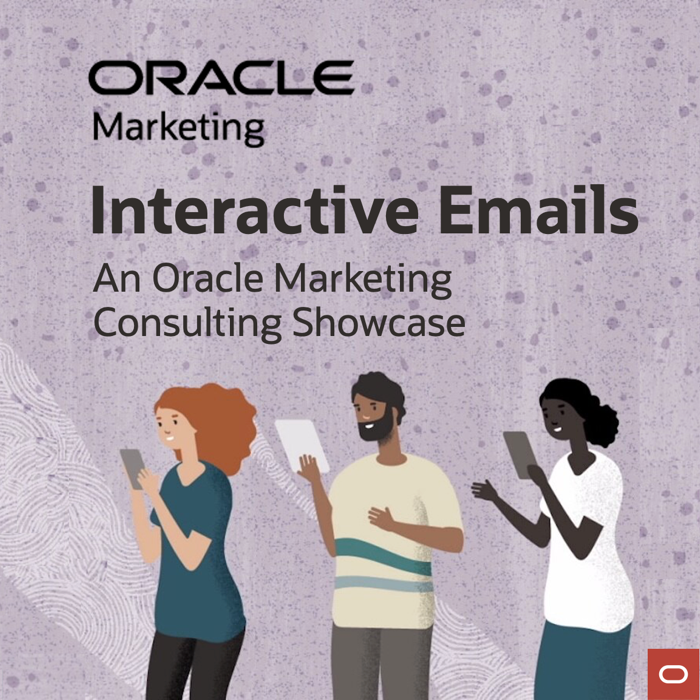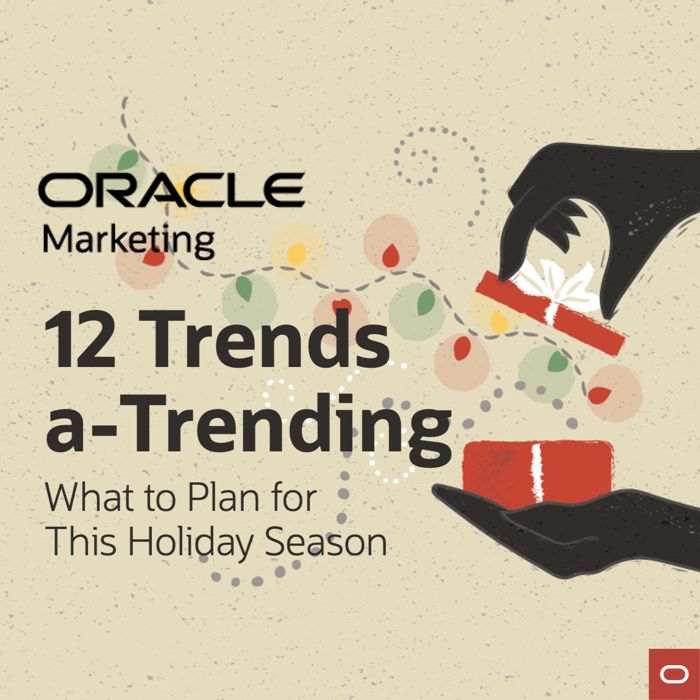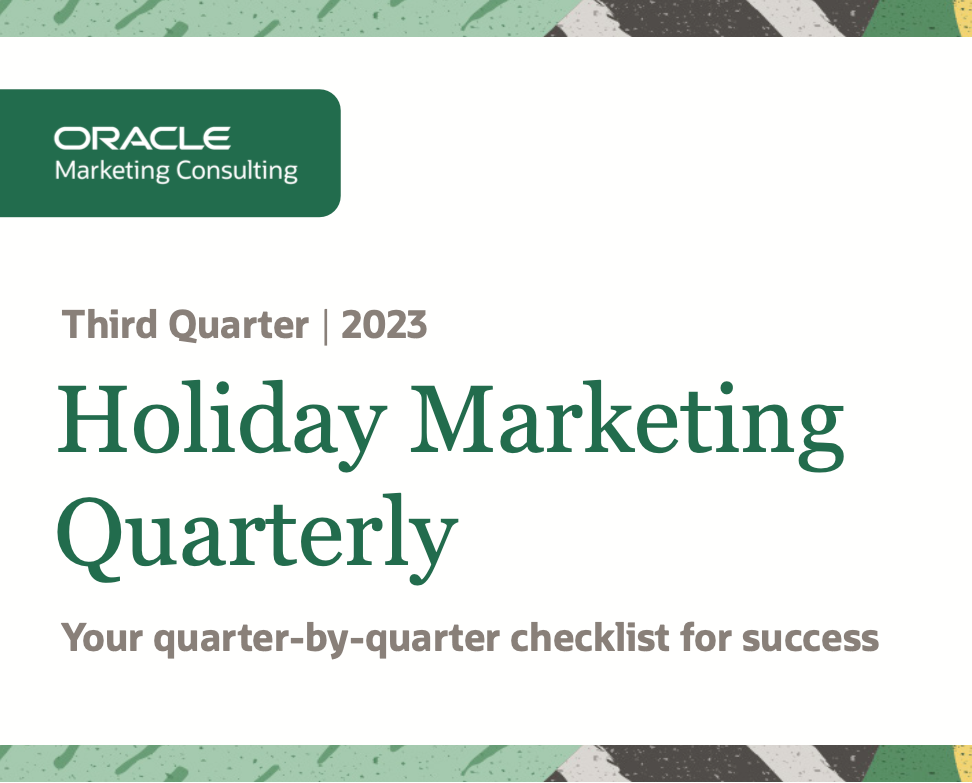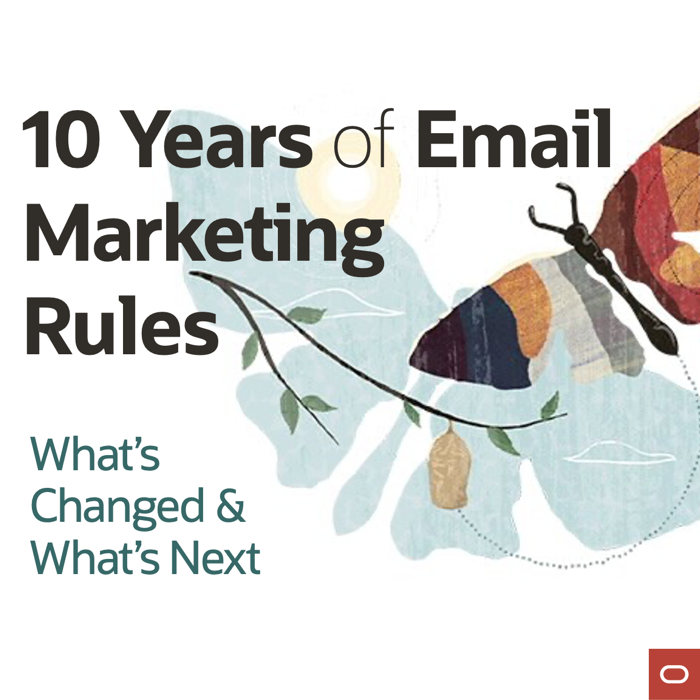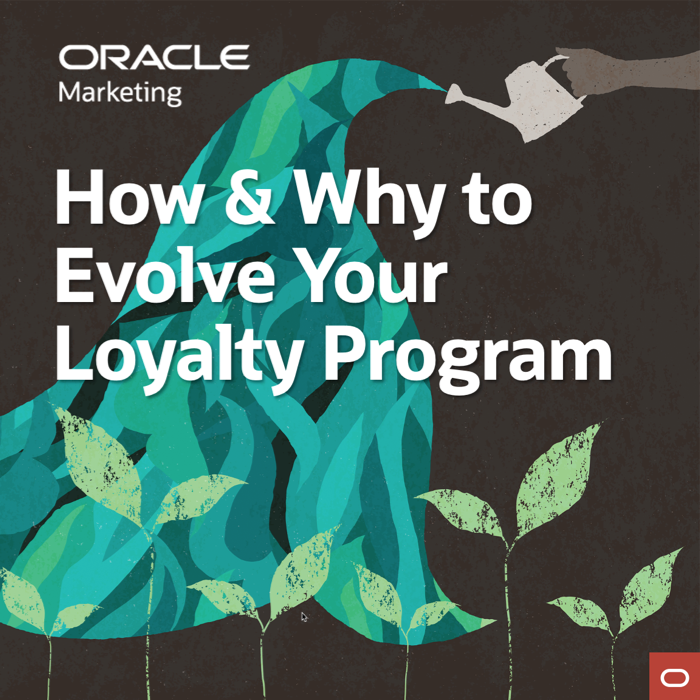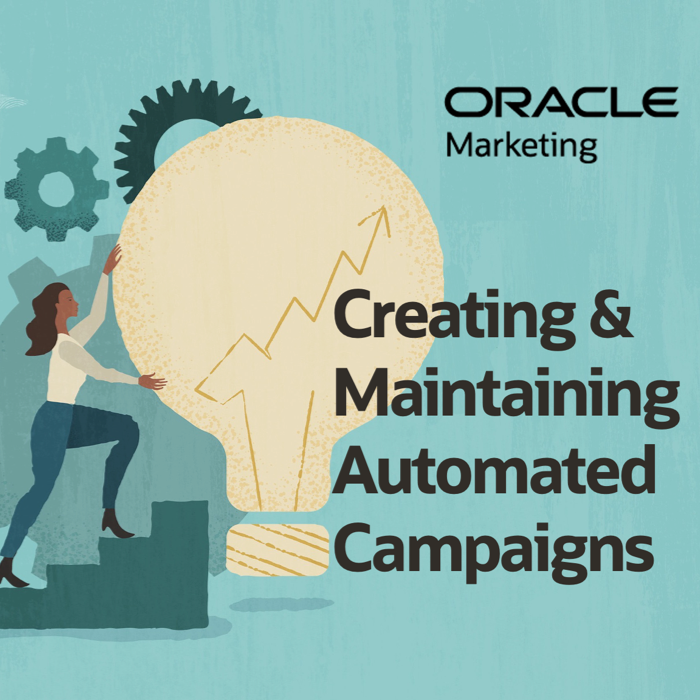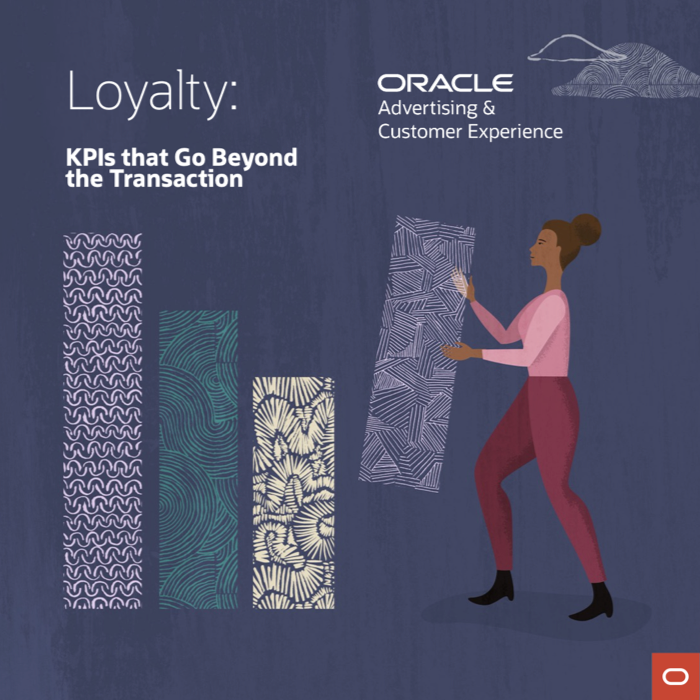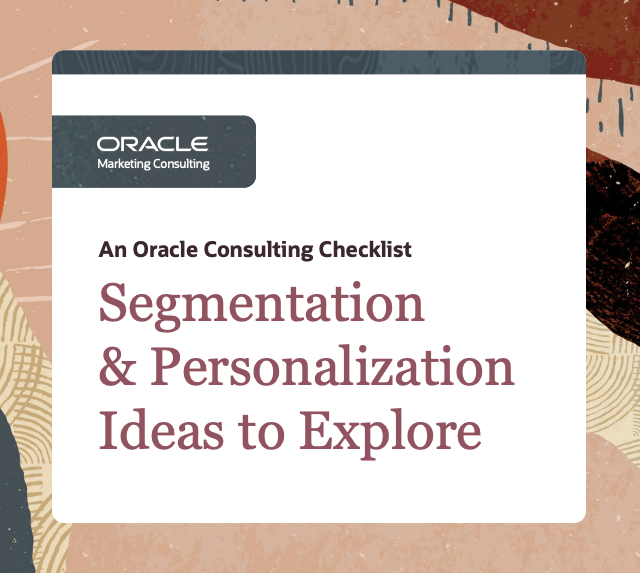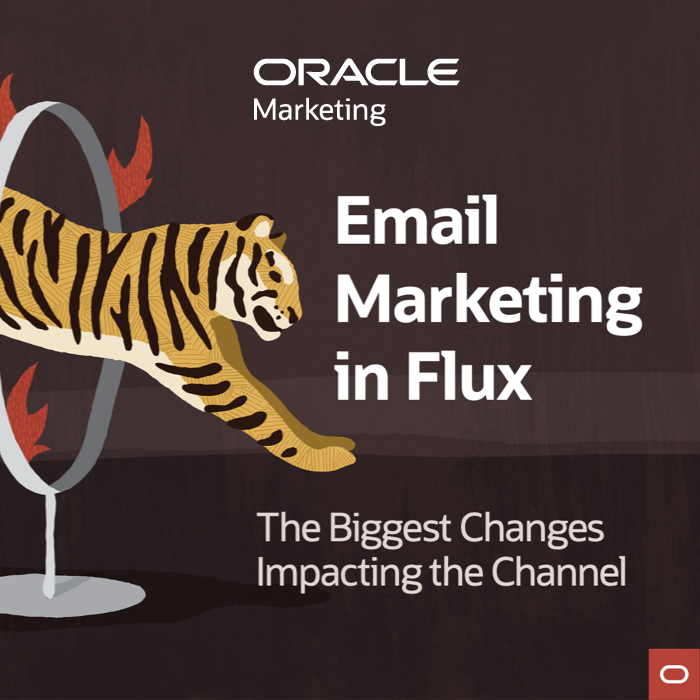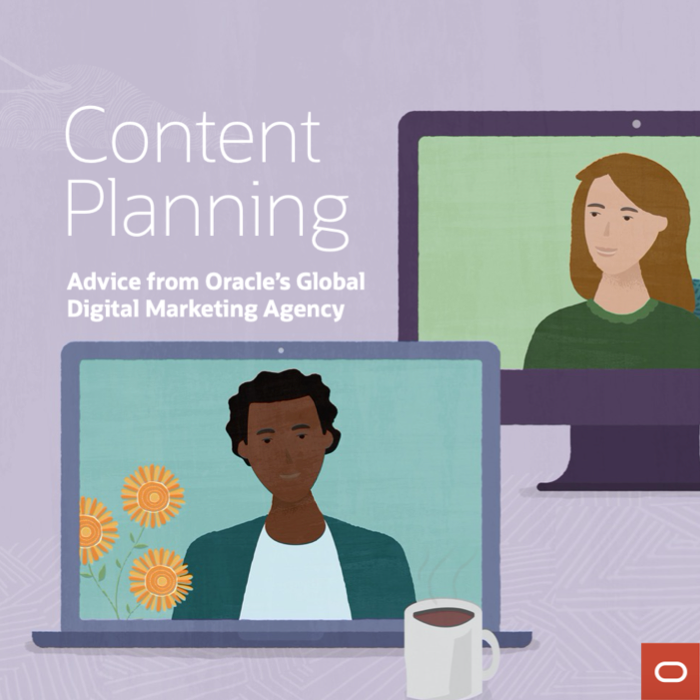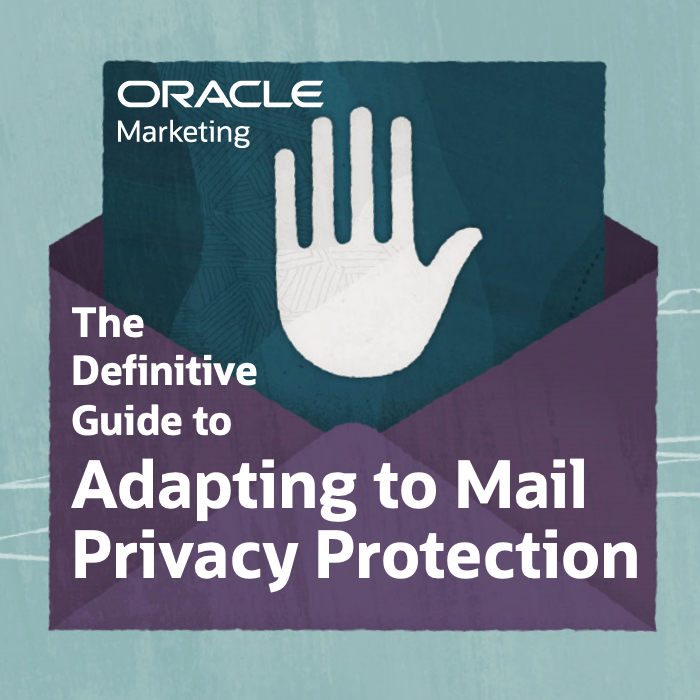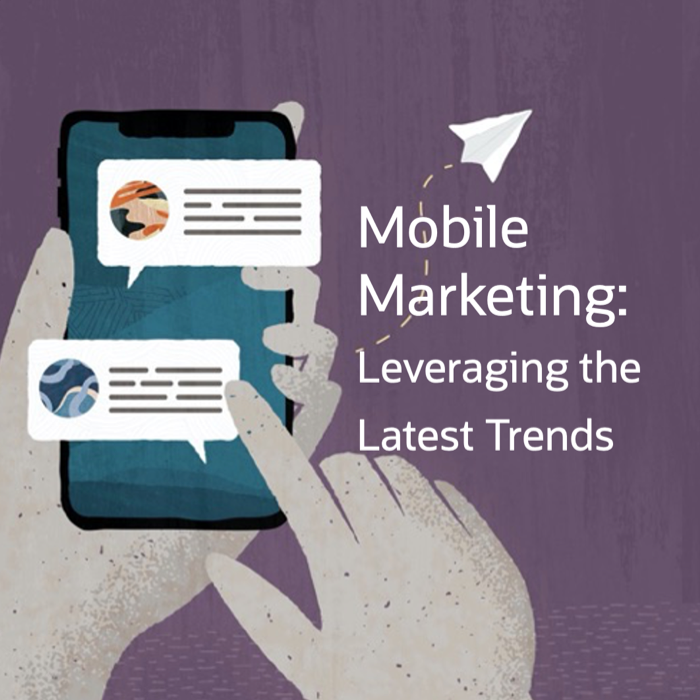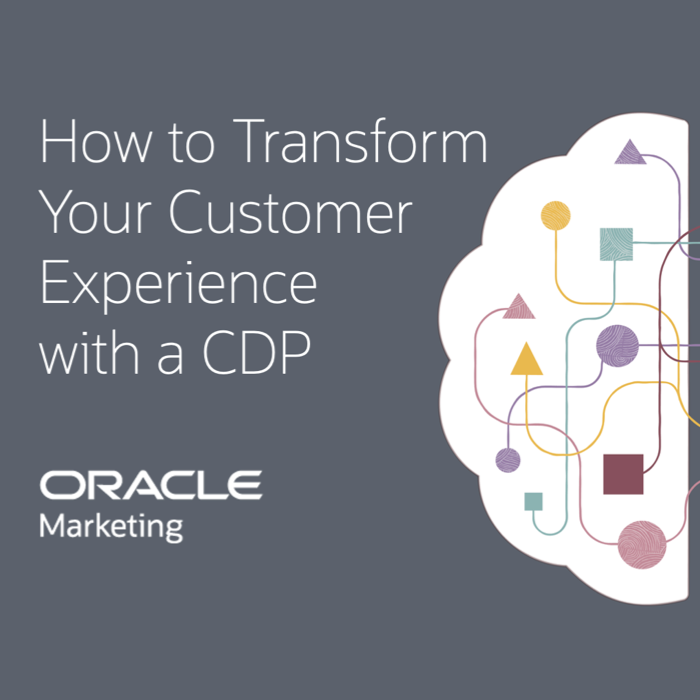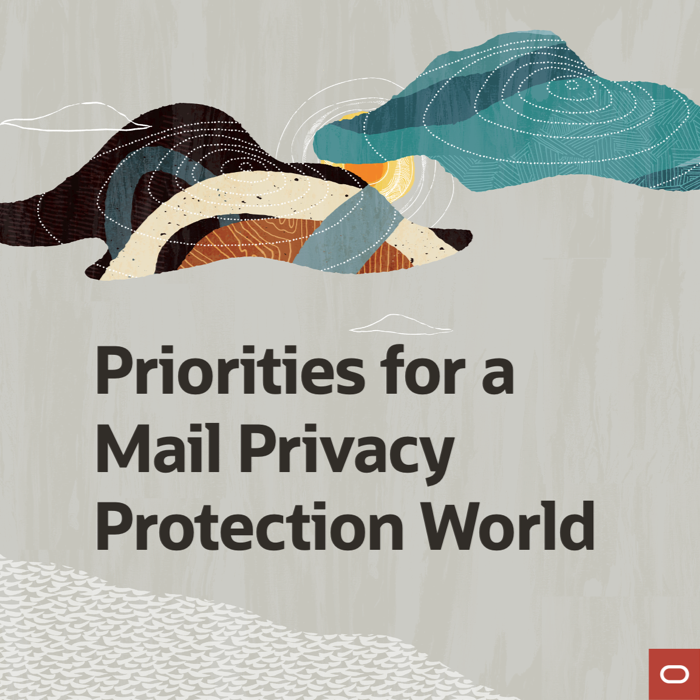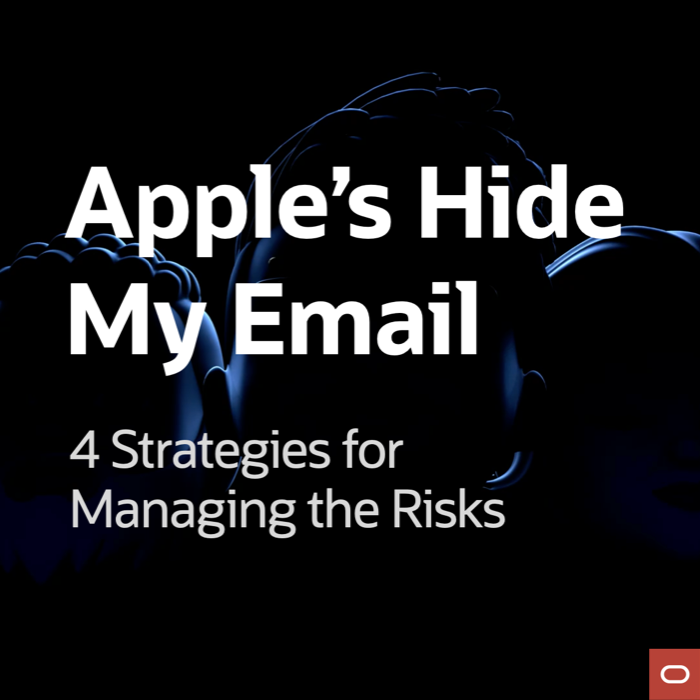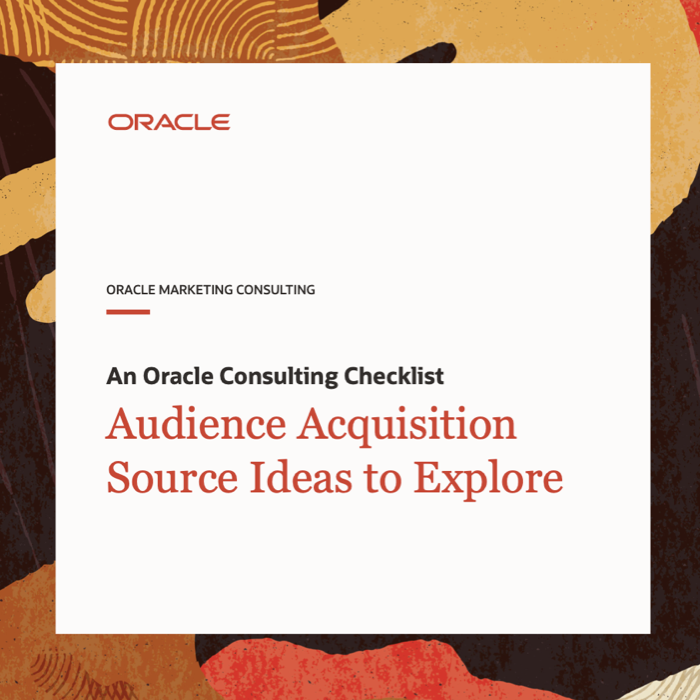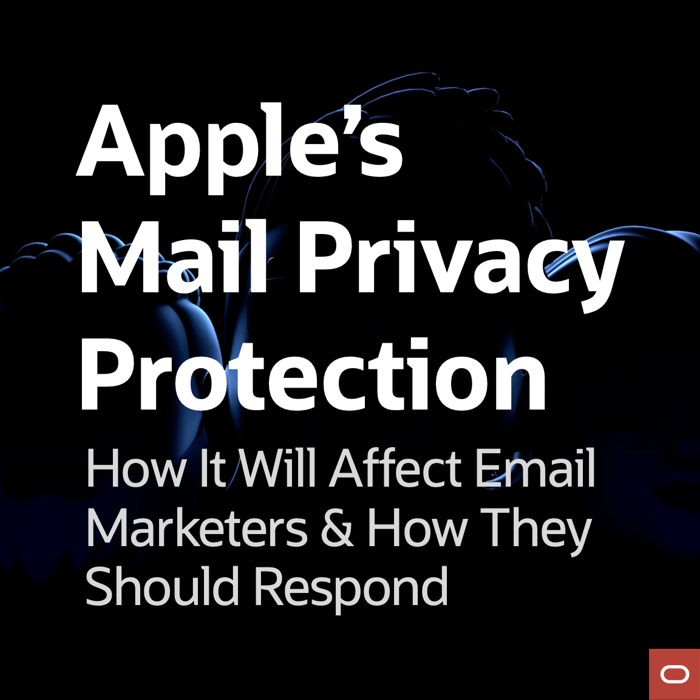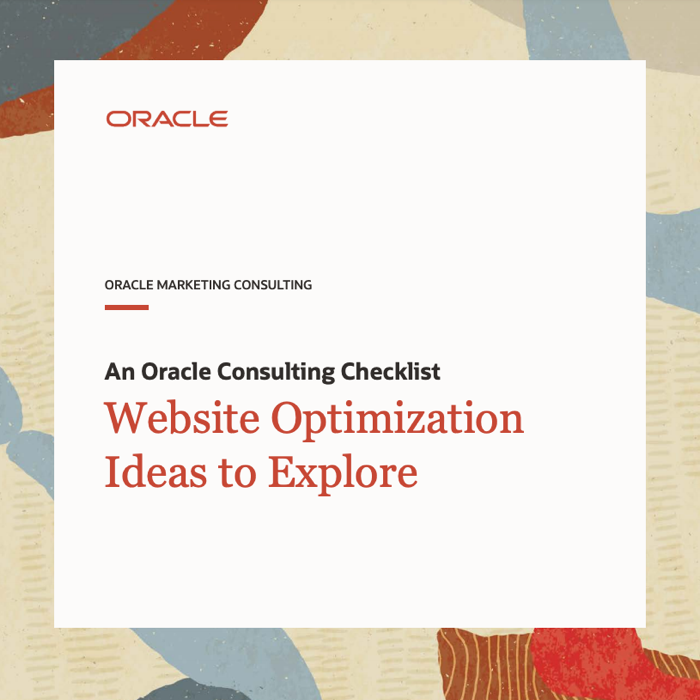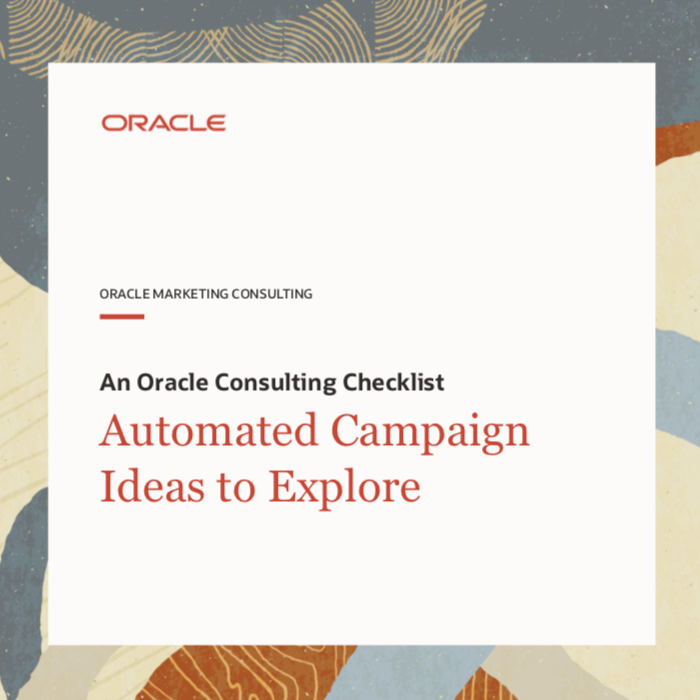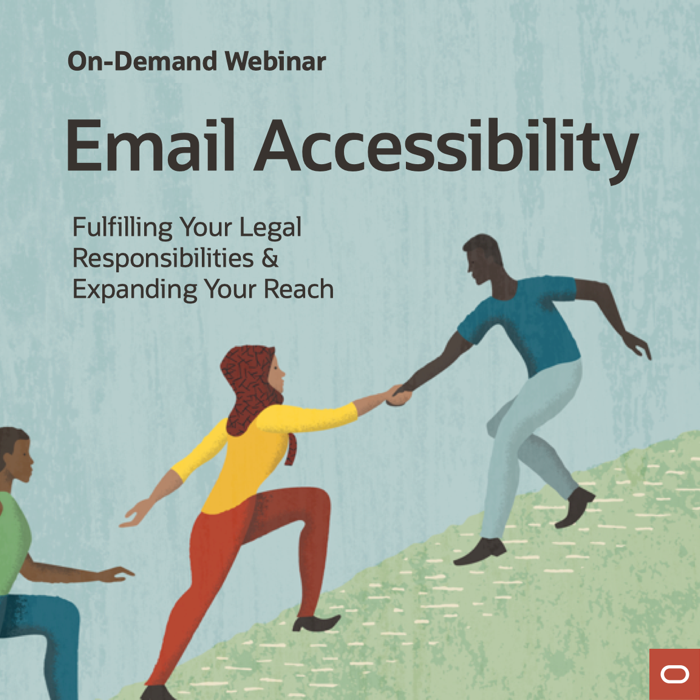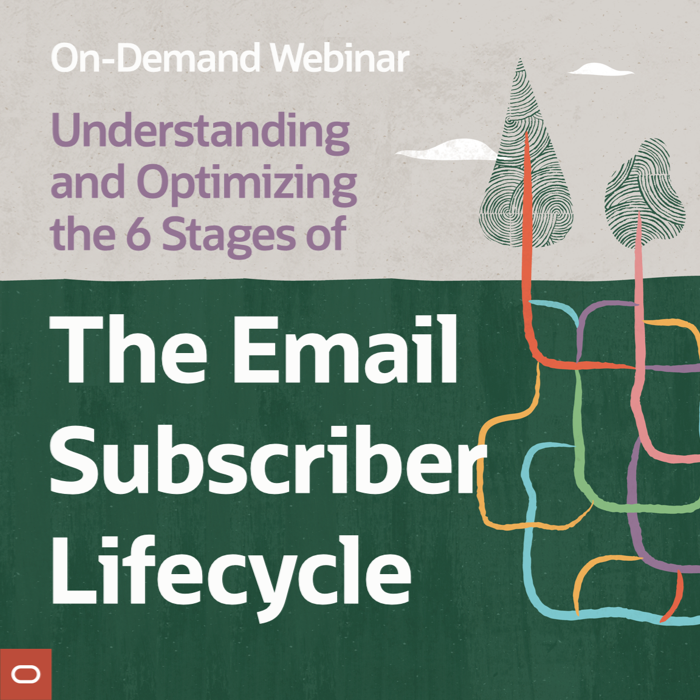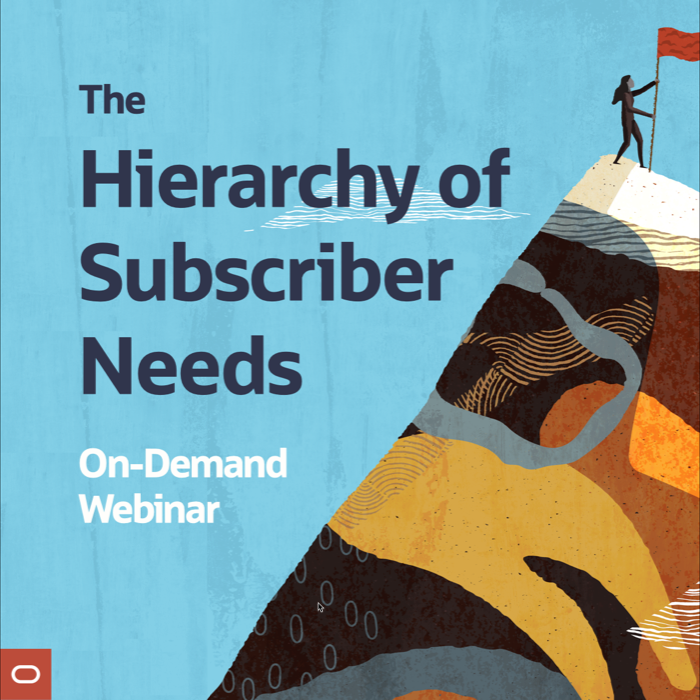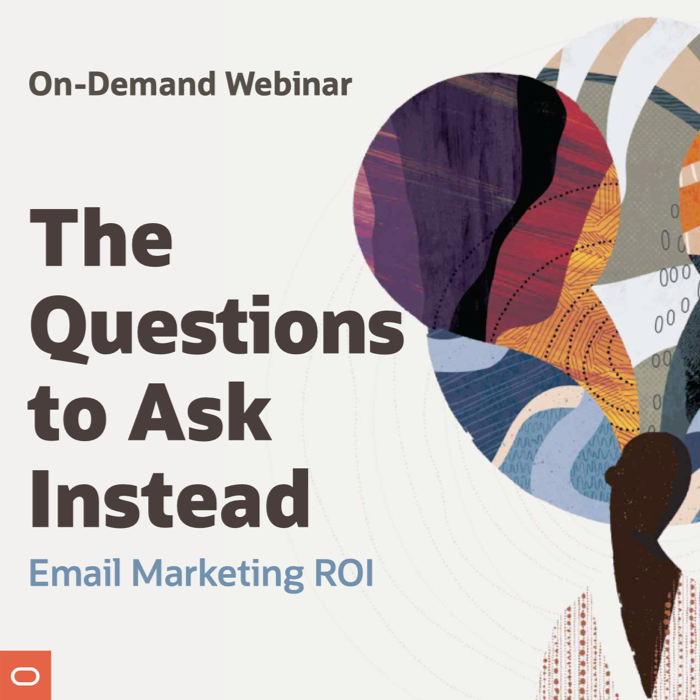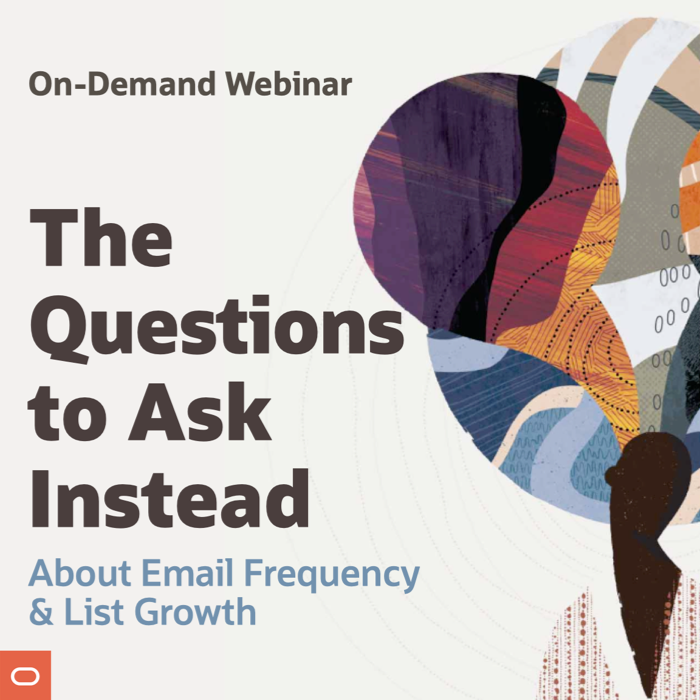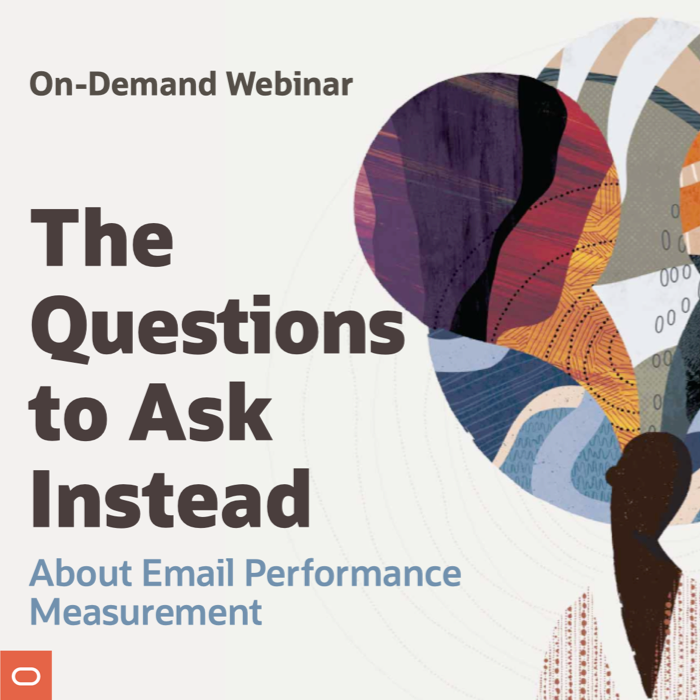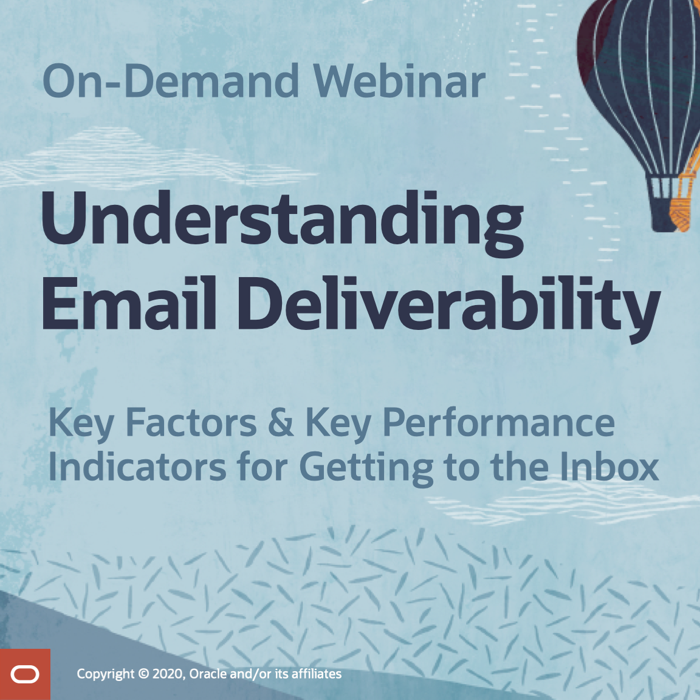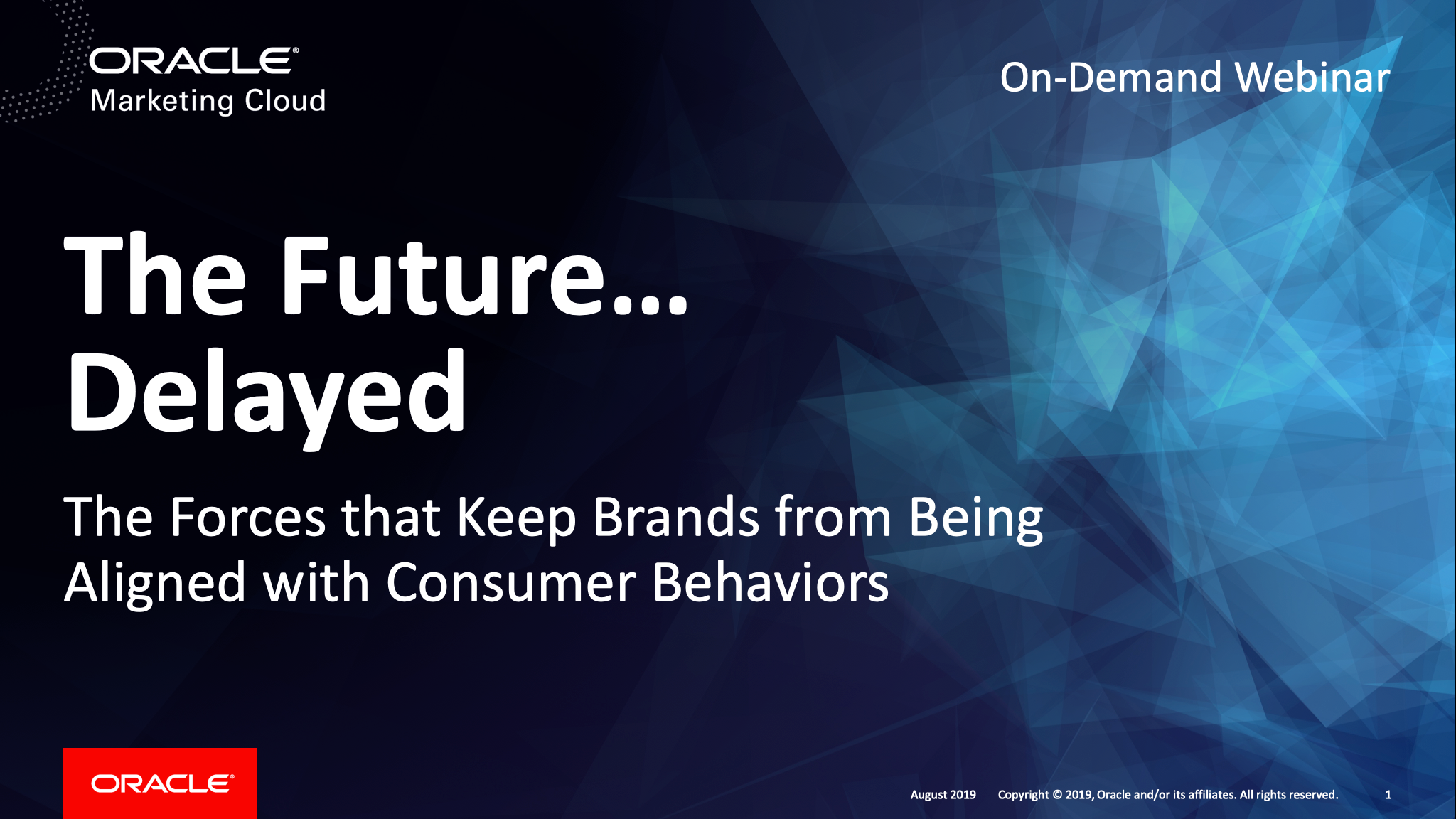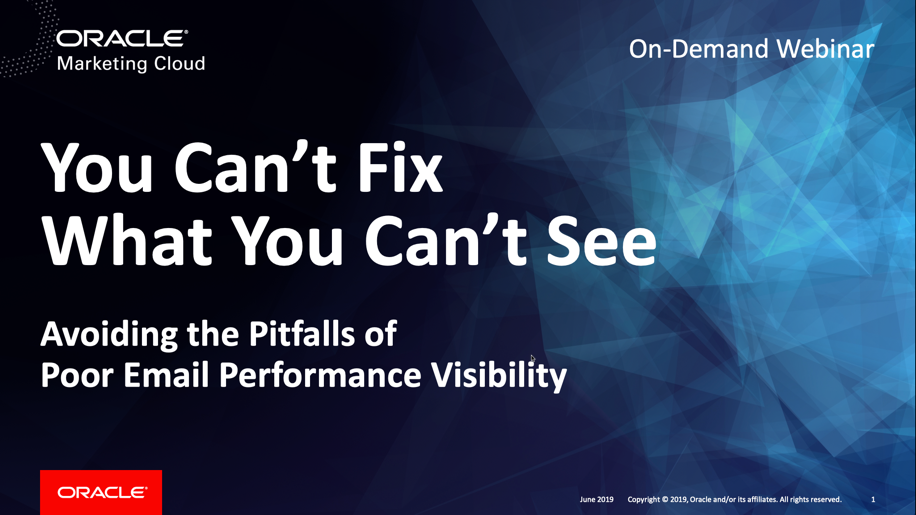Holiday Marketing Quarterly: First Quarter 2020 Checklist
Posted on December 19, 2019

Oracle’s Holiday Marketing Quarterly gives B2C brands a quarter-by-quarter checklist for how to achieve more during the critical holiday season with their email marketing and other digital marketing channels. Along with guidance on planning, strategy, and prioritization, you’ll get advice and tips from some of Oracle CX Marketing Consulting’s more than 500 digital marketing experts.
Our first quarter guide contains a 27-point checklist and is focused on seizing opportunities, mitigating risks, learning from the just-passed holiday season, and starting to make the larger structural and programmatic changes necessary to succeed during the next holiday season. It covers six areas:
- Holiday Post-Mortems
- Seasonal Buyer Reactivations
- Email Deliverability Recoveries
- Automated Email Optimization & Growth
- Creative Refreshes
- Upgrades & Expansions of Your Tech Stack
For details on each of those areas…
>> Download the 14-page Q1 2020 Holiday Marketing Quarterly
Posted by Chad S. White
How to Turn Email Addresses on File into Opt-Ins
Posted on November 26, 2019
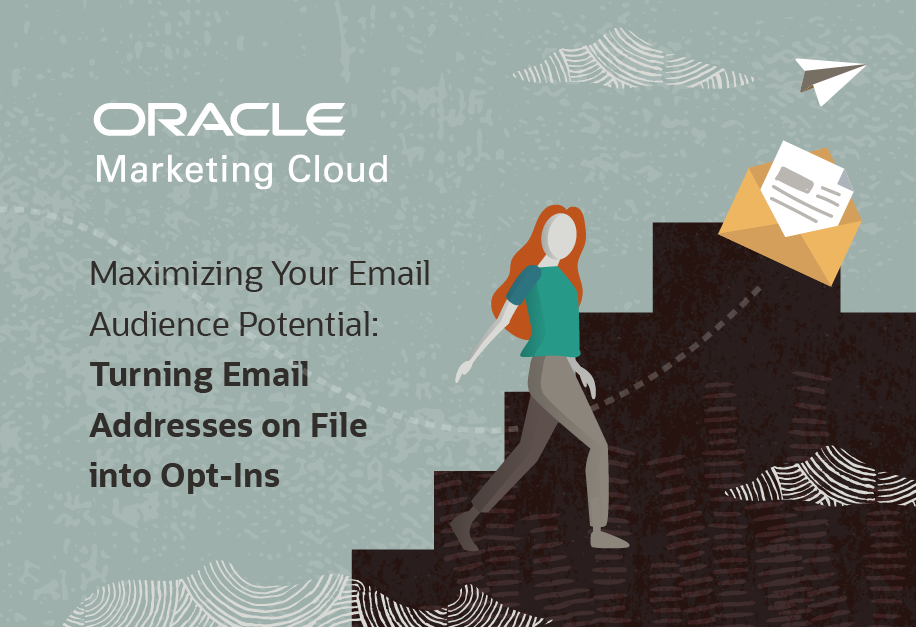
Everyone wants more subscribers who are regularly converting. While going out and attracting new, high-value subscribers is one path that every brand should explore, it’s also the most expensive. Thankfully, there are many other paths open to marketers to achieve their goals when they take a step-by-step approach to maximizing their email audience potential.
One of those approaches is to leverage the email addresses you have on file and try to get more of those folks to opt in for marketing emails. With an email address serving as a means of customer identification across much of the digital landscape, when you already know a person’s email address, it’s much easier to reach them than someone who hasn’t shared their email address with you yet. Mining your “un-reachable” email subscriber list can reveal several opportunities to engage these people and grow your business, both via the email channel and other channels.
In this post, Oracle Consulting’s Kaiti Gary explains how to evaluate your email addresses on file so you can identify the people who are the most promising candidates to approach. She then explains some of the direct and indirect ways you can reach these subscribers and try to get them to opt-in to receive your marketing emails.
For all the details on who to grow your email list by mining your non-opted-in addresses…
>> Read the full post on Oracle’s Modern Marketing Blog
Posted by Chad S. White
Optimizing Your Email Signup Forms to Maximize Your Email Audience Potential
Posted on November 19, 2019
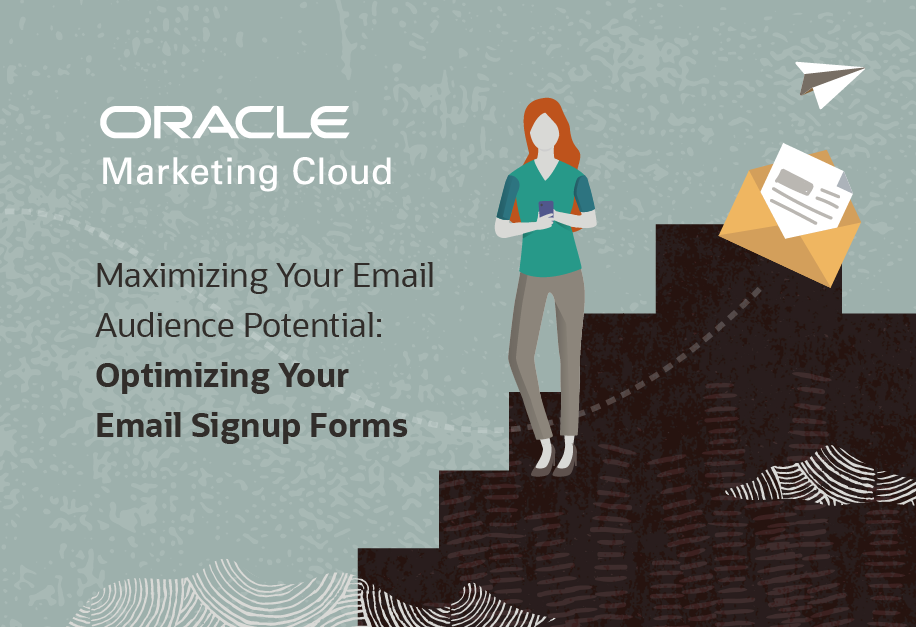
Everyone wants more subscribers who are regularly converting. While there are many paths open to marketers to achieve this goal, one of the most important is having email signup forms and processes that are as friction-free as possible, says Oracle Marketing Cloud Consulting’s Kaiti Gary.
In this post, she breaks down all the major elements that go into creating high-performing, low-friction email signup forms, including…
- Casting a wide net, so you have email signup forms in all the places where high-quality subscribers gather
- Communicating the benefits of signing up, because no one is excited to “Sign up for email” or “Join our email list.”
- Making it easy, because even people who are interested are in a hurry and can get distracted or deterred by forms that are confusing or any longer than they need to be
In addition to exploring each of those issues in detail, Kaiti doesn’t lose sign of the need to make email signup forms compliant and safe. She talks about ensuring that you’re following laws, like Canada’s Anti-Spam Law (CASL), the General Data Protection Regulation (GDPR), and the California Consumer Privacy Act (CCPA), which goes into effect on Jan. 1, 2020. She also discusses how to ensure you’re protecting your sender reputation.
For all the details on how to optimize your email signup forms…
>> Read the full post on Oracle’s Modern Marketing Blog
Posted by Chad S. White
Holiday Marketing Predictions: What to Expect This Year
Posted on October 8, 2019
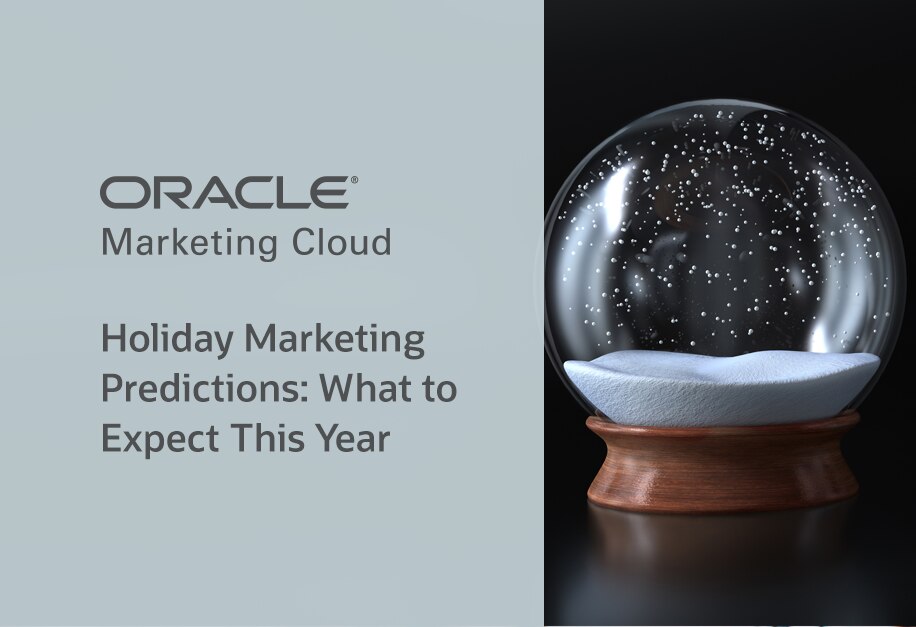
Every holiday season is a little different because of a variety of factors, including technology trends, consumer sentiment, and the timing of the calendar. Oracle Marketing Cloud (OMC) Consulting’s experts share their thoughts and predictions on how this holiday marketing season will be different from past ones.
Our predictions this year revolve around…
- How marketers will adjust to the shorter holiday calendar
- The increase in competition in the inbox
- How marketers will close the deal with last-minute shoppers
- The quiet holiday debut that AMP for Email is likely to have
- The rise of send-time optimization
- How marketers will adapt to heightened privacy concerns this holiday season
- How brands will carry their holiday momentum into the New Year
For a full discussion of each holiday marketing prediction…
>> Read the entire post on Oracle’s Modern Marketing Blog
Posted by Chad S. White
Email Marketing Isn’t Owned Media—It’s Granted Media
Posted on September 24, 2019
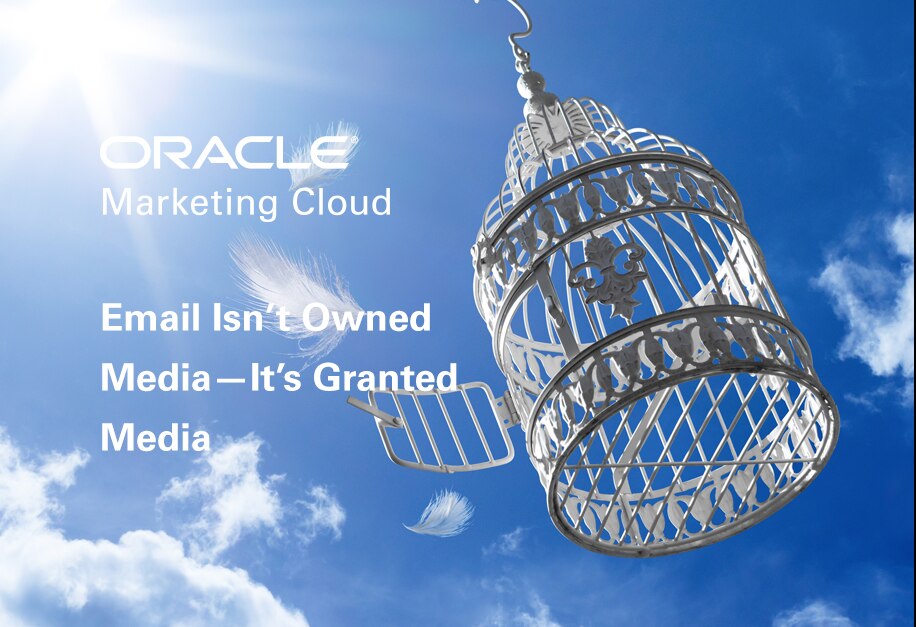
Email marketing has an unfortunate reputation as being owned media. It’s unfortunate because it doesn’t align marketers with their subscribers and inbox providers, who are the true owners of email. And that results in strategies and tactics that invariably end up hurting their email programs and their businesses.
Some of you might be thinking, Wait, but we own our list. We spent a lot of time and money collecting those email addresses.
It’s true that brands have ownership over the email addresses they’ve collected. They can use them to identify customers and prospects across channels, and even sell them to other companies (which we highly discourage). But, beyond owning them as an identifier, brands don’t own email addresses because they don’t own the relationship that makes up the vast majority of each address’s worth.
In my book Email Marketing Rules (3rd Ed.), I say, “Lists are owned only to the extent that someone can own a collection of nonbinding handshake agreements.” Subscribers can nullify most of the value of a brand knowing their email address by withdrawing their permission—either by unsubscribing, reporting the sender’s emails as spam, or simply by ignoring the sender’s emails for a while, at which point their inbox provider will start junking or blocking their emails to the individual.
Permission is where the vast majority of email’s value comes from, and no one can own or sell someone’s permission. Period.
You might concede that point, but be thinking, But for those people who have given me permission, I own that right to reach them via email so long as I maintain their permission.
>> Read the entire post on Oracle’s Modern Marketing Blog
Posted by Chad S. White
Business Book of the Month Podcast: Chad S. White’s ‘Email Marketing Rules’
Posted on July 1, 2019
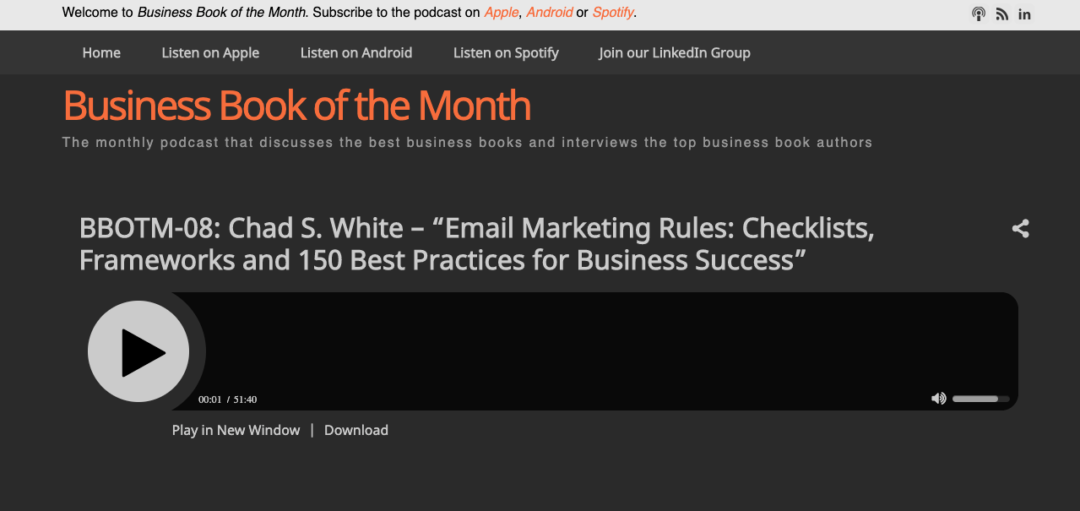
I recently had the pleasure of speaking with David Bain, the host of the Business Book of the Month Podcast, about my book, Email Marketing Rules.
During the 51-minute interview, we talked about a wide range of email marketing topics, including:
- The Hierarchy of Subscriber Needs
- How the paid-owned-earned (POE) media model has become outdated and doesn’t account for email marketing, as well as several other popular channels
- How to best include promotional content in transactional emails
- The need to have promotional emails, transactional emails, and corporate emails on different IP addresses and sender domains
- The recommended minimal email frequency
- Where to find your most valuable subscribers
- Sender name best practices
- Different approaches to mobile-friendly email design
- The advantages of maintaining a content calendar
- And much, much more.
>> Listen to the Business Book of the Month podcast online
Or listen wherever you get your podcasts
Posted by Chad S. White
SEMrush’s Marketing Scoop Podcast: What Works Best for Email Marketing Now?
Posted on May 30, 2019
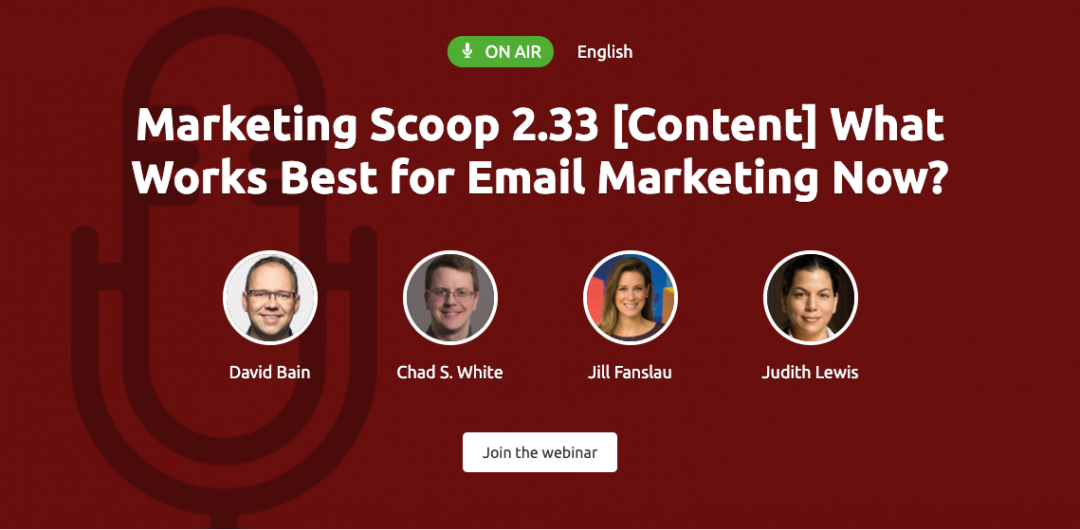
How can content marketing and email marketing work together? That was the central question that AWeber’s Jill Fanslau and I tried to answer when we appeared on the Season 2, Episode 33 of SEMrush’s Marketing Scoop podcast.
During the episode, we talked about:
- What’s changed in email marketing over the past few years
- How email marketing’s ROI is a double-edged sword, that both helps and hurts marketers
- How brands should adjust to GDPR and why the law is good for brands
- Why list purchases are a no-no and the confusion around list purchases and rentals
- List building across channels
- The role of subject lines and the right victory metrics to use for subject line A/B testing
- How it’s not email versus other channels and rather about email working with all your other channels and vice versa
- And much more
Listen to the episode of Marketing Scoop wherever you get your podcasts or…
>> Listen to the podcast online
Posted by Chad S. White
Industry Spotlight on Email Marketing at Nonprofits
Posted on October 19, 2018

Every industry does email marketing a little differently. They have different goals, different business models, different conversion channels, different offers, and on and on. That’s definitely the case with nonprofits.
Nonprofits tend to be fairly small compared to businesses in other industries. Their organizations are usually driven primarily by donations, and therefore the end of the year is a key time period for them.
As with other organizations, email marketing is critical for nonprofits. Nearly 79% of nonprofits say email marketing is important to the overall success of their organization.
However, nonprofits are especially challenged when it comes to email resourcing in terms of staffing and tools. That has led to major challenges and only 44% of nonprofits saying their email program is successful.
In this Industry Spotlight on Email Marketing at Nonprofits, we’ll look at a range of email marketing issues, including…
>> Read the entire post on the Litmus blog
Posted by Chad S. White
Holistic Email Marketing: The State of Retail Email Subscribe Forms in 2018
Posted on March 14, 2018
 With GDPR going into effect in May, many brands are having to make changes to their email sign-up processes to become compliant. But since you’re touching all of your subscriber acquisition sources anyway, why not optimize them so that they perform better?
With GDPR going into effect in May, many brands are having to make changes to their email sign-up processes to become compliant. But since you’re touching all of your subscriber acquisition sources anyway, why not optimize them so that they perform better?
The State of Retail Email Subscribe Forms in 2018 from Holistic Email Marketing and Pure360 will help you benchmark your email signup process and identify opportunities to improve. The report examines the subscription practices of 80 retailers, and includes advice and commentary from me and Komal Helyer of Pure360, Jordie van Rijn of Emailmonday, Jo Crawford of Mr. Porter, Kate Barrett of eFocus Marketing, Ian Rhodes of Ecommerce Growth Co., and Ben Davis of Econsultancy.
The report includes interesting findings on email signup form fields, signup calls-to-action, and much more. It includes some particularly novel advice around email consent when unchecked boxes are a requirement.
I encourage you to check it out. You’ll be sure to find a few tactics that will help you with compliance and boosting your list growth.
>> Download the free report from Holistic Email Marketing
Posted by Chad S. White
Webinar Recording + Q&A: Email Tactics Customers Hate
Posted on March 5, 2018
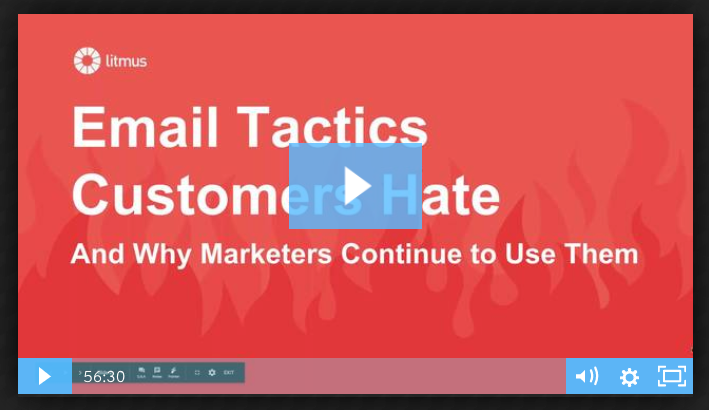
There’s a disconnect in today’s email marketing technology. While some tactics are helping brands get closer to their customers, others are undermining their return on investment by pushing customers away.
For instance, 17% of brands are buying email addresses to grow their list and reach new prospects. However, many of those brands are among the 33% of brands that have been blocked and 15% that have been blacklisted in the past year.
In this webinar, I help you distinguish between the tools and tactics that improve your email program and those that hurt your program because they’re abusive and annoying. In addition to explaining why some of these tactics appear worthwhile on the surface, I discuss:
- Tools and services to avoid
- How to keep good tools from doing your program harm
- Using the right metrics to draw conclusions
Along the way, I share research, examples, and frameworks that will help you ensure you’re spending your marketing dollars on the right email tactics and technology.
>> Watch the recording, download the slides, and read the Q&A on the Litmus blog
Posted by Chad S. White

Welcome! Email Marketing Rules is your guide to understanding the best practices of this complex, often misunderstood channel as you craft the best executions for your brand. Every week, we’ll explore strategies and tactics, discuss tips and inspiration, and dig into industry news and trends.
Chad S. White
Head of Research
Oracle Digital Experience Agency
Author of Email Marketing Rules and nearly 4,000 articles about digital and email marketing
Topics
Recent Posts
Archives
- May 2024 (1)
- April 2024 (6)
- March 2024 (9)
- February 2024 (10)
- January 2024 (7)
- December 2023 (7)
- November 2023 (6)
- October 2023 (10)
- September 2023 (7)
- August 2023 (9)
- July 2023 (7)
- June 2023 (8)
- May 2023 (8)
- April 2023 (9)
- March 2023 (9)
- February 2023 (6)
- January 2023 (10)
- December 2022 (5)
- November 2022 (7)
- October 2022 (10)
- September 2022 (9)
- August 2022 (6)
- July 2022 (5)
- June 2022 (8)
- May 2022 (7)
- April 2022 (4)
- March 2022 (9)
- February 2022 (7)
- January 2022 (7)
- December 2021 (5)
- November 2021 (7)
- October 2021 (9)
- September 2021 (7)
- August 2021 (9)
- July 2021 (6)
- June 2021 (8)
- May 2021 (6)
- April 2021 (3)
- March 2021 (6)
- February 2021 (6)
- January 2021 (9)
- December 2020 (8)
- November 2020 (6)
- October 2020 (10)
- September 2020 (9)
- August 2020 (8)
- July 2020 (10)
- June 2020 (12)
- May 2020 (6)
- April 2020 (5)
- March 2020 (8)
- February 2020 (6)
- January 2020 (7)
- December 2019 (6)
- November 2019 (6)
- October 2019 (8)
- September 2019 (3)
- August 2019 (5)
- July 2019 (6)
- June 2019 (3)
- May 2019 (7)
- April 2019 (2)
- March 2019 (4)
- February 2019 (3)
- January 2019 (5)
- December 2018 (9)
- November 2018 (7)
- October 2018 (11)
- September 2018 (7)
- August 2018 (9)
- July 2018 (7)
- June 2018 (5)
- May 2018 (5)
- April 2018 (7)
- March 2018 (8)
- February 2018 (3)
- January 2018 (6)
- December 2017 (8)
- November 2017 (8)
- October 2017 (4)
- September 2017 (6)
- August 2017 (5)
- July 2017 (11)
- June 2017 (9)
- May 2017 (8)
- April 2017 (5)
- March 2017 (5)
- February 2017 (3)
- January 2017 (5)
- December 2016 (11)
- November 2016 (6)
- October 2016 (5)
- September 2016 (10)
- August 2016 (10)
- July 2016 (6)
- June 2016 (6)
- May 2016 (8)
- April 2016 (7)
- March 2016 (9)
- February 2016 (8)
- January 2016 (8)
- December 2015 (7)
- November 2015 (8)
- October 2015 (7)
- September 2015 (8)
- August 2015 (4)
- July 2015 (8)
- June 2015 (4)
- May 2015 (6)
- April 2015 (8)
- March 2015 (6)
- February 2015 (9)
- January 2015 (7)
- December 2014 (13)
- November 2014 (7)
- October 2014 (9)
- September 2014 (11)
- August 2014 (13)
- July 2014 (9)
- June 2014 (6)
- May 2014 (8)
- April 2014 (6)
- March 2014 (11)
- February 2014 (7)
- January 2014 (8)
- December 2013 (10)
- November 2013 (8)
- October 2013 (11)
- September 2013 (10)
- August 2013 (12)
- July 2013 (9)
- June 2013 (10)
- May 2013 (12)
- April 2013 (7)
- March 2013 (9)
- February 2013 (5)
 Email Marketing Rules
Email Marketing Rules

